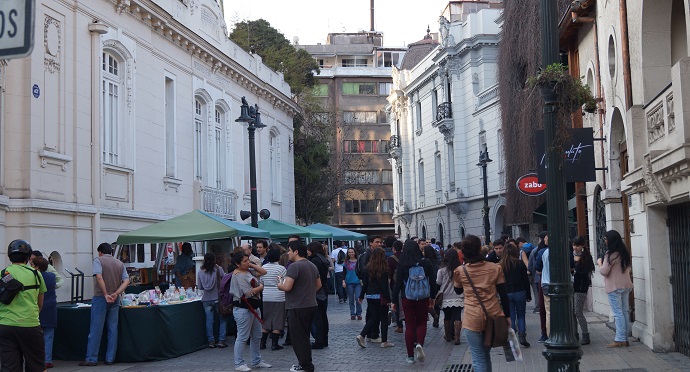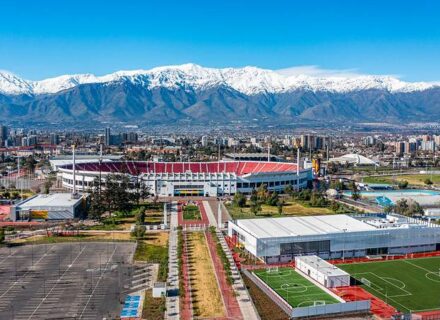7 neighborhoods in Santiago that attract hundreds of people everyday. Be it because of their culinary offer, their historic or heritage value or their importance for commerce, these neighborhoods are a must for those who visit Santiago.
Since its foundation in 1541, Santiago has become one of the cities with the highest concentration of businesses and cultural activity within the country. Currently, the number of people living in the capital nears 8 millions and day by day, they wander around its different neighborhoods in the search of goods, food, entertainment and a first-hand approach to the history and heritage of the city. Here we show you 7 neighborhoods in the capital that are part of our everyday routes.
Lastarria Neighborhood
Located right between Alameda (one of Santiago’s main avenues) and Parque Forestal, the Lastarria neighborhood is one of the most popular spots in Santiago. A set of streets that combine culture, restaurants, different shops, and tourism. This neighborhood stands out due to its different attractions, from its small antiques fair located right in José Victorino Lastarria street, almost reaching Merced; its design stores, cafes and restaurants that offer a wide variety of meal options; its museums and art galleries that invite visitors to learn more about the current art scene of the country.
Franklin Neighborhood
The ideal location for those who search for all sort of goods. Probably one of the most diverse places in the capital, the Franklin neighborhood offers all sorts of furniture, clothes, shoes, fine meat, technological devices, toys, and even antiquities that take us on a trip back in time. A neighborhood that’s been present since 1847, but it was only in the 1990s when it became an important shopping spot.
Italia Neighborhood
Located in the Ñuñoa and Providencia districts, this neighborhood has slowly gained popularity due to its varied and innovative culinary, fashion, art, and home decoration options, all laid out on cozy streets that invite us to visit them with family or friends. This neighborhood also counts with bike repair shops and furniture restoration workshops that have become part of the heritage of the area. Moreover, the neighborhood also houses the Guillermo Francke plaza and Italian Embassy in Chile.
Concha y Toro Neighborhood
Only steps away from the República metro stop, one can find this small oasis of buildings and mansions of unique architecture. Listed as a typical area by the Council of Monuments due to its neo classical, gothic, art deco and beaux arts facades, which reflect the elegance of the beginning of the 20th century, among its buildings, the National Historic Monument Cerrera Theatre is a clear stand-out.The construction of the neighborhood was commissioned by Mrs. Teresa Cazotte, who, after her husband -Enrique Concha y Toro- passed away, decided to develop the area that belonged to them with the idea of recreating an old european neighborhood she had visited during her youth.
Bellavista Neighborhood
This is, without a doubt, the bohemian neighborhood of Santiago. Its streets stand out for their great amount of bars, pubs, and clubs; ideal locations for locals and visitors that are looking for a place to experience Santiago’s nightlife. It is worth mentioning that during the daytime, Bellavista transforms into the ideal place to enjoy the varied culinary options the restaurants of the area offer; Patio Bellavista and Constitución street being two of the most popular spots for this.
Patronato Neighborhood
The favorite destination for those who are looking to buy clothes at a reasonable and convenient price. Its popularity goes back to Patronato’s origins as a wholesales spot, which attracted small business owners. However, nowadays and thanks to the arrival of migrants to the neighborhood, Patronato has become a symbol of multiculturalism, offering a wide range of products that reflect the Korean, Japanese, Indian, Chinese and Thai culture.
Yungay Neighborhood
A historic neighborhood with a great heritage value that’s been part of Santiago’s identity since the first urban plans of the city. With buildings that go back to the 18th century, this neighborhood charms with its architecture and cultural value. In Yungay, it is possible to find parks, theaters, cultural centers and the most varied local food.



